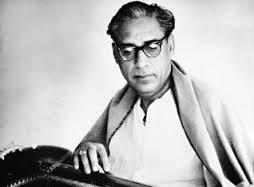
Amir Khan developed his own singing style, influenced by the styles of Abdul Waheed Khan (vilambit tempo), Rajab Ali Khan (taans) and Aman Ali Khan (merukhand). This unique style, known as the Indore Gharana, blends the spiritual flavor and grandeur of dhrupad with the ornate vividness of khyal. He presented an aesthetically detailed badhat (progression) in ati-vilambit laya (very slow tempo) using bol-alap, followed by gradually speeding up sargams with various ornamentations, taans and bol-taans, including Merukhandi patterns, and finally a madhyalaya or drut laya (medium or fast tempo) chhota khyal or a ruba'idar tarana. While he was famous for his use of merukhand, he did not do a purely merukhandi alap but rather inserted merukhandi passages throughout his performance. He often used the taals Jhoomra and Ektaal, and generally preferred a simple theka (basic tabla strokes that define the taal) from the tabla accompanist. He could do layakari, including bol-baant, which he has demonstrated in a few recordings, but he generally favored a swara-oriented and alap-dominated style. He had a rich baritone voice with a three-octave range.
His performances had an understated elegance, reverence, restrained passion and an utter lack of showmanship that both moved and awed listeners. According to Mohan Nadkarni's book "Great Masters: Profiles in Hindustani Classical Vocal Music", Bade Ghulam Ali Khan's music was extroverted and exuberant, whereas Amir Khan's was an introverted, dignified 'darbar' style. Amir Khansahib believed that poetry was important in khyal compositions, and with his pen name, Sur Rang ("colored in swara"), he has left several compositions.